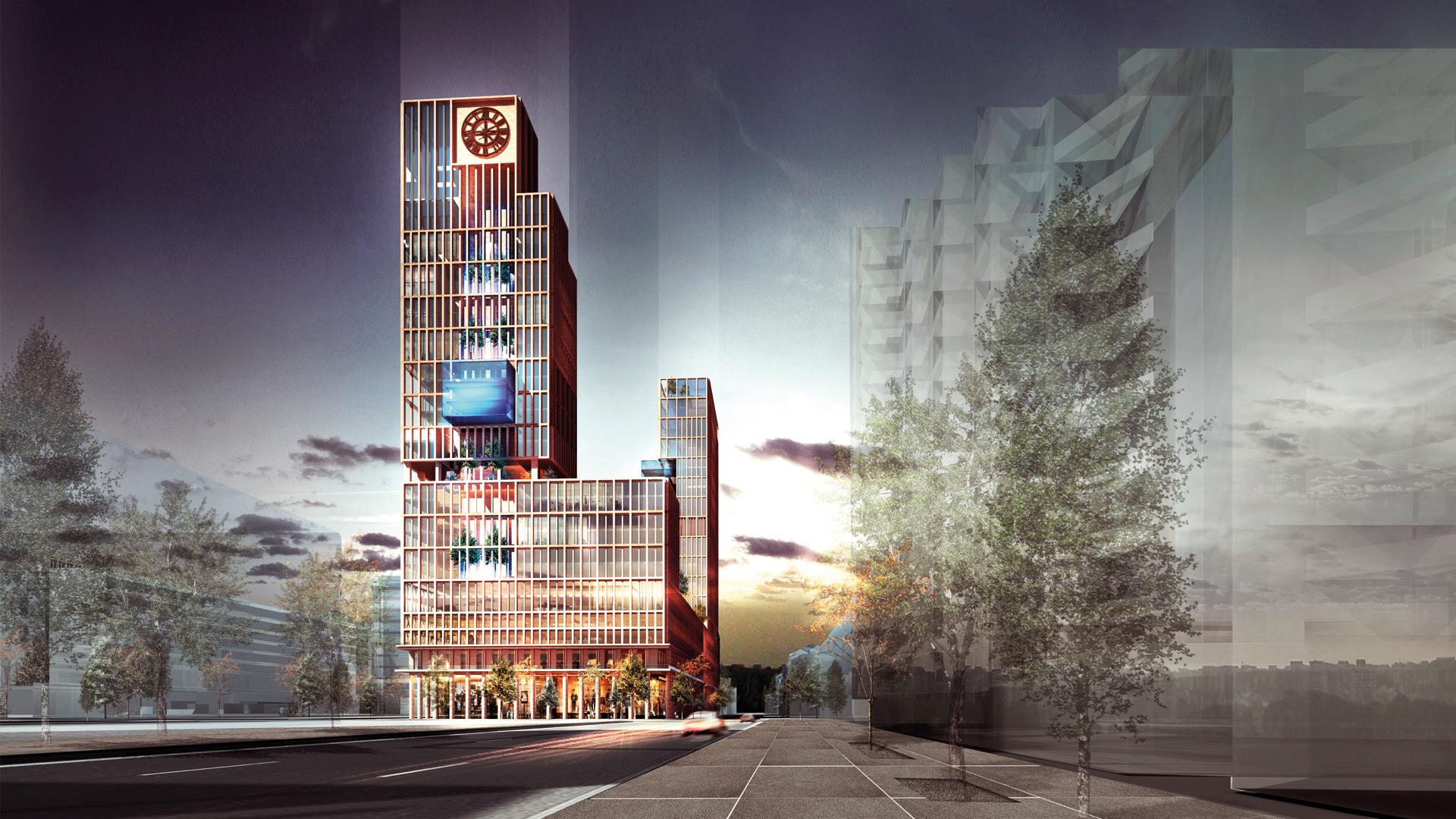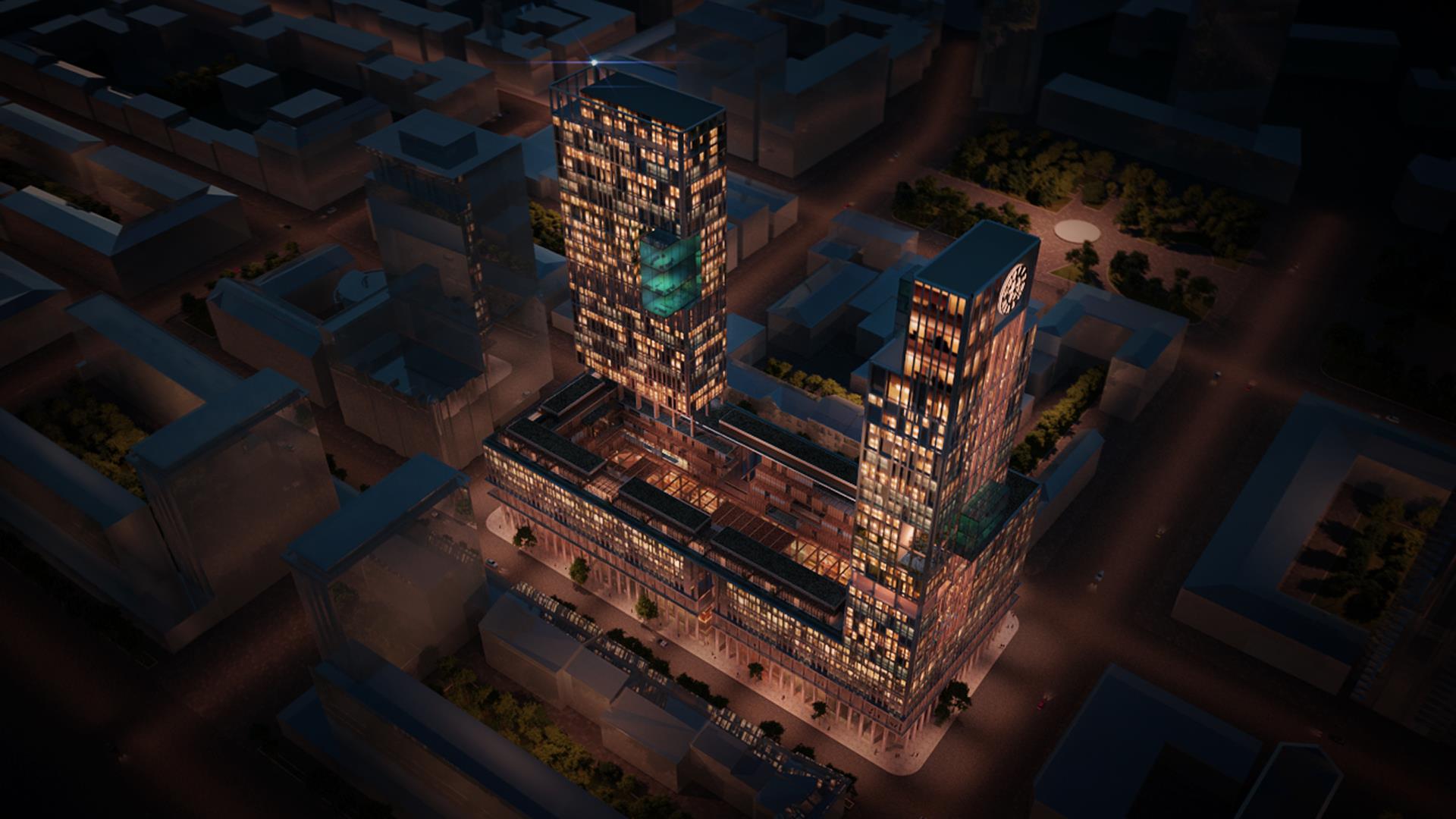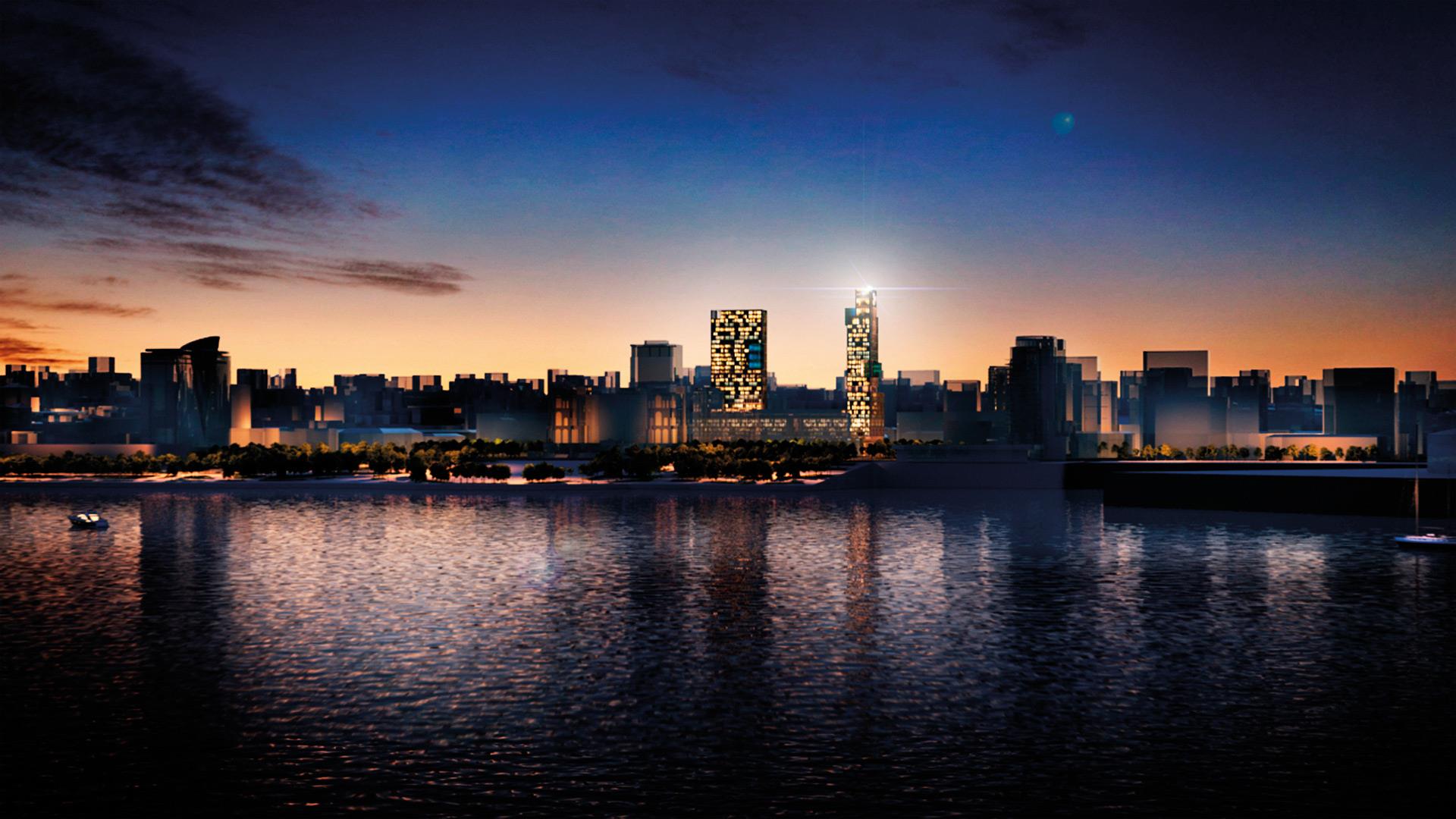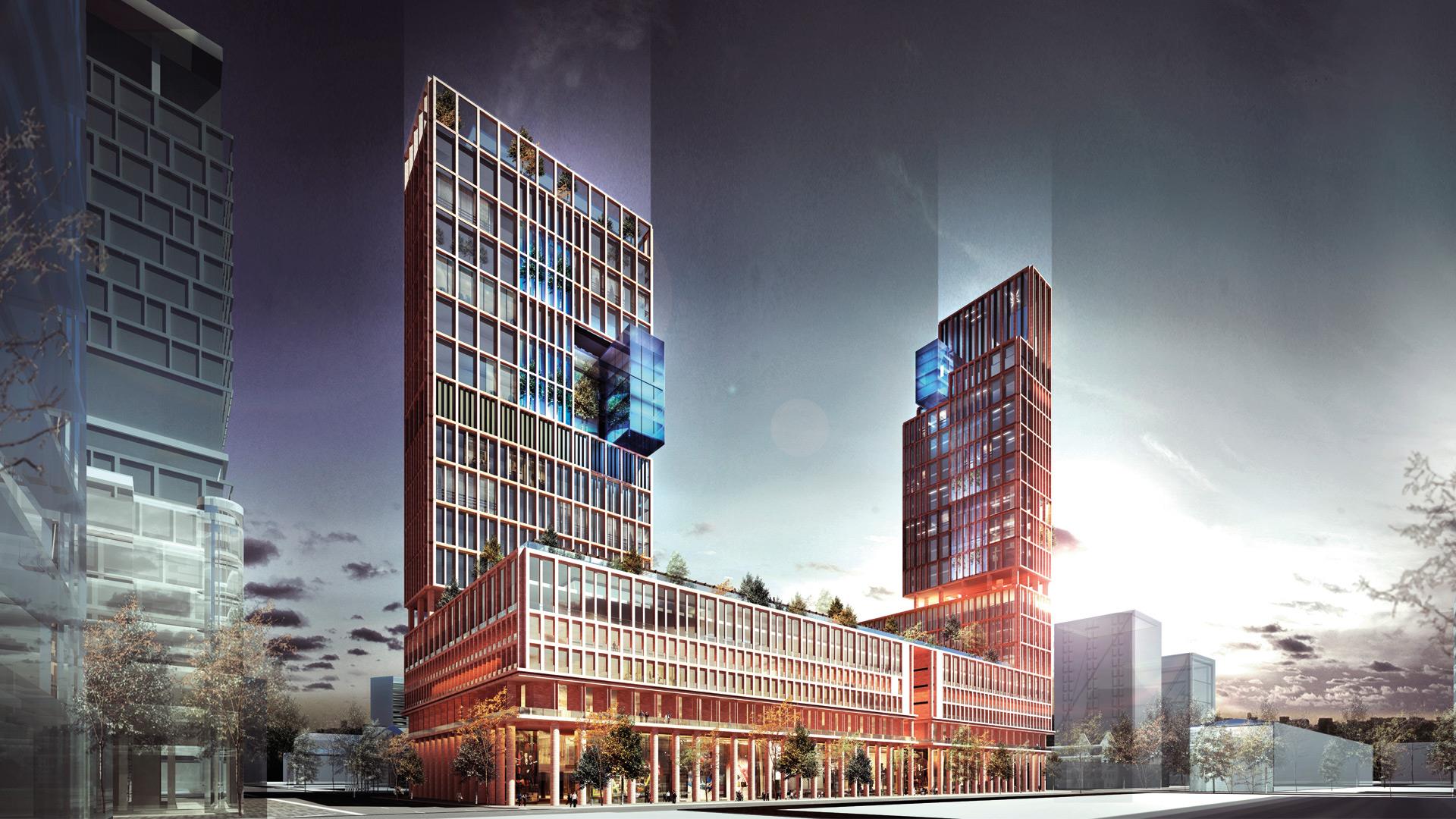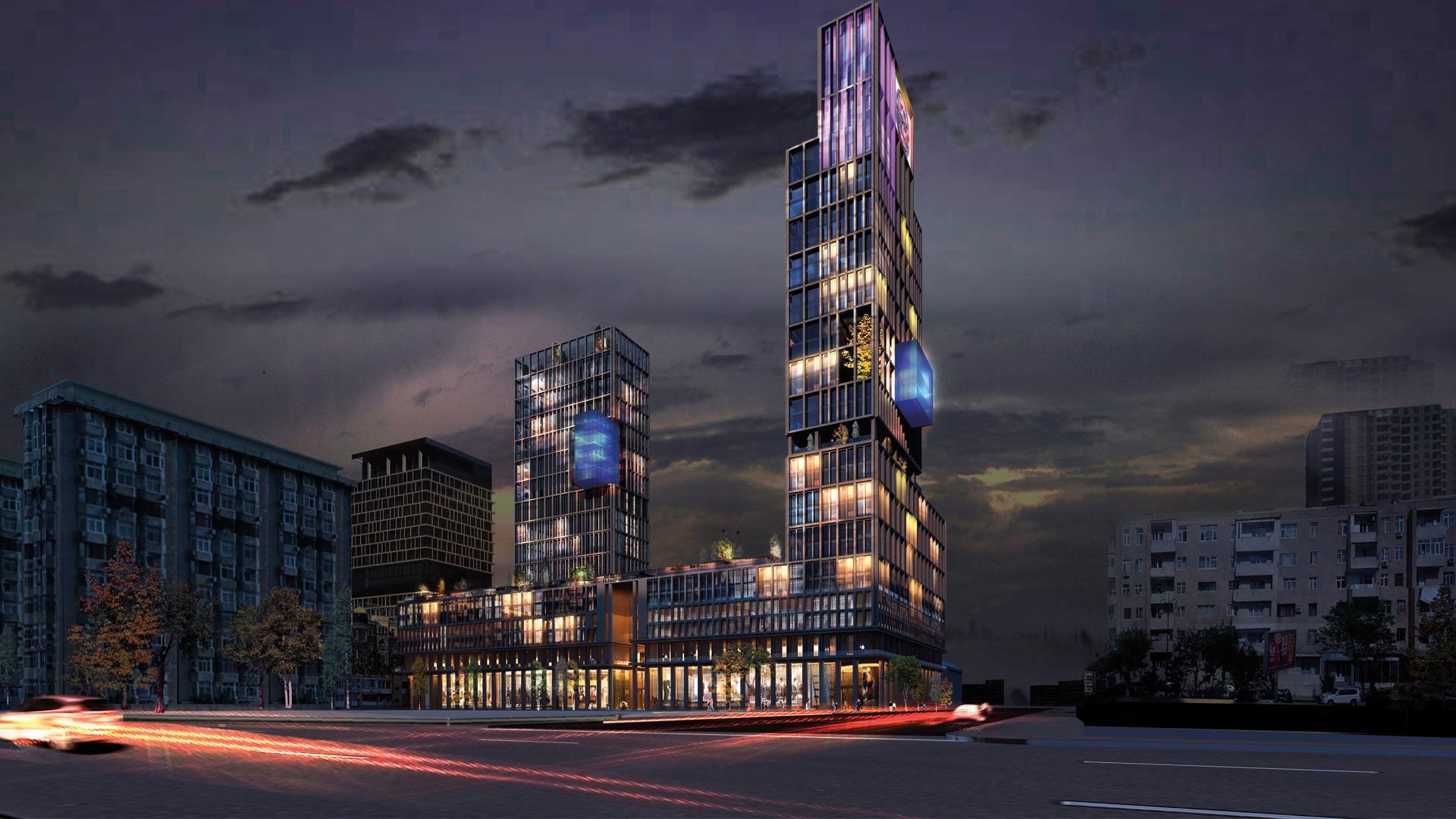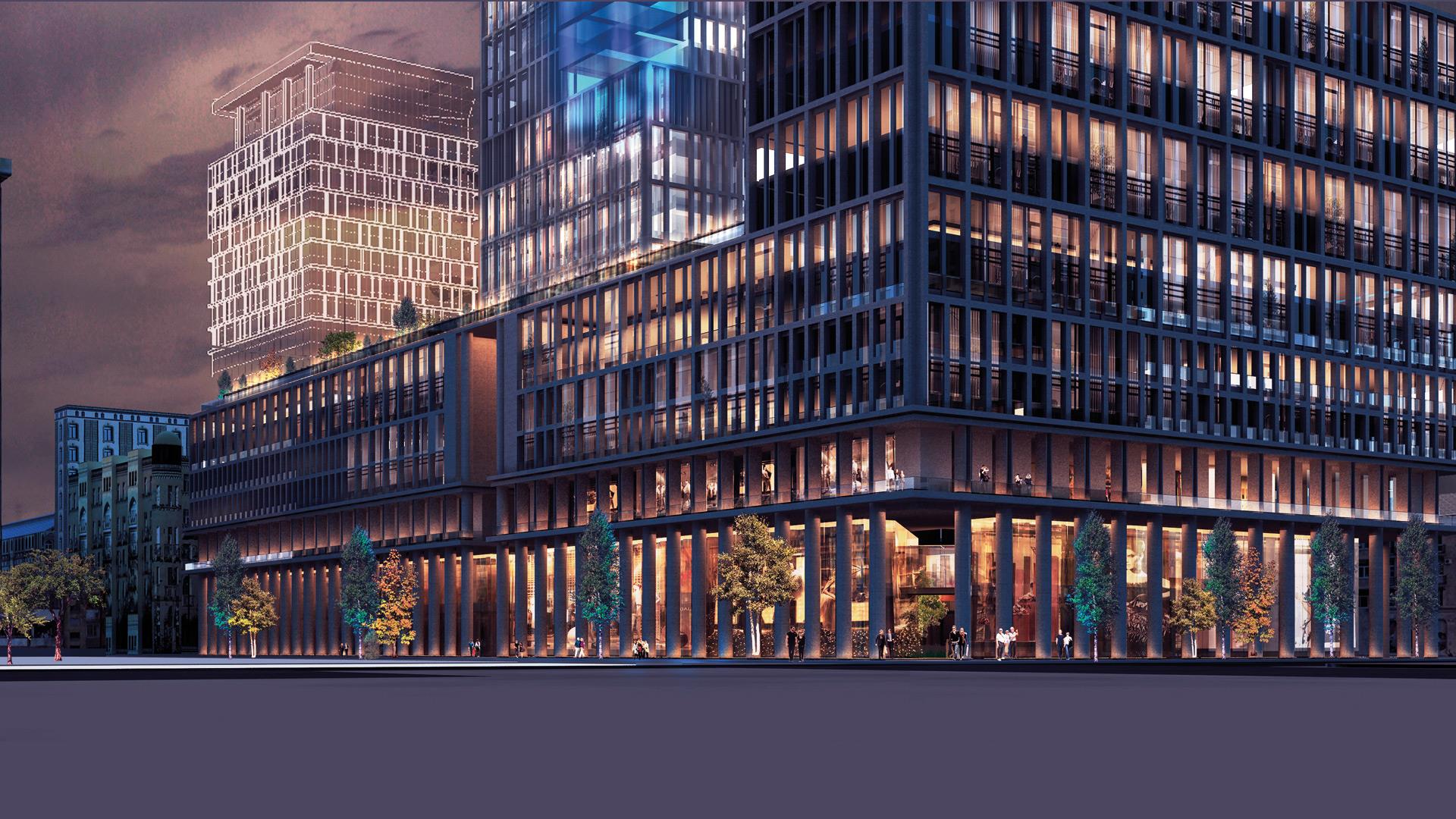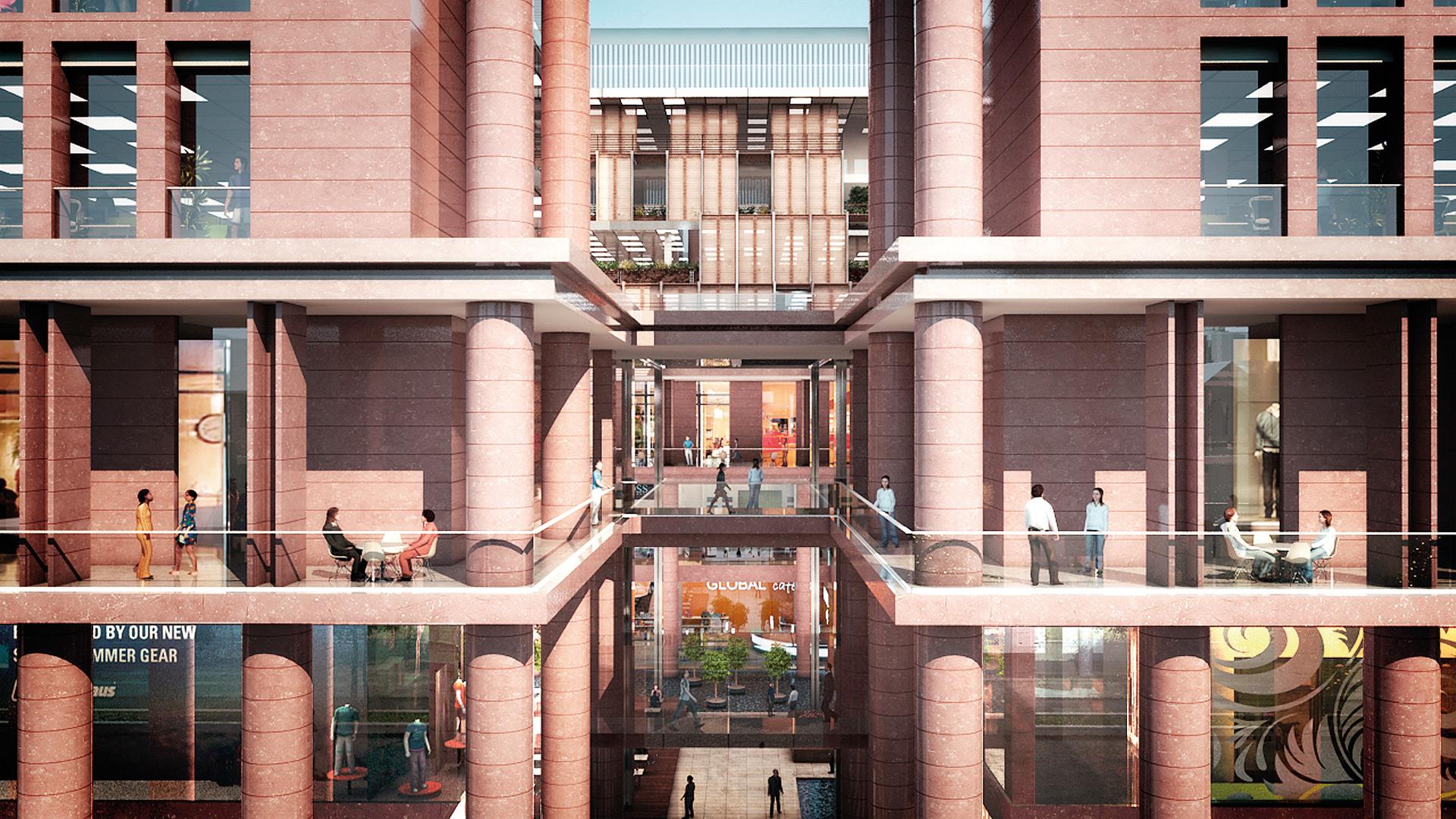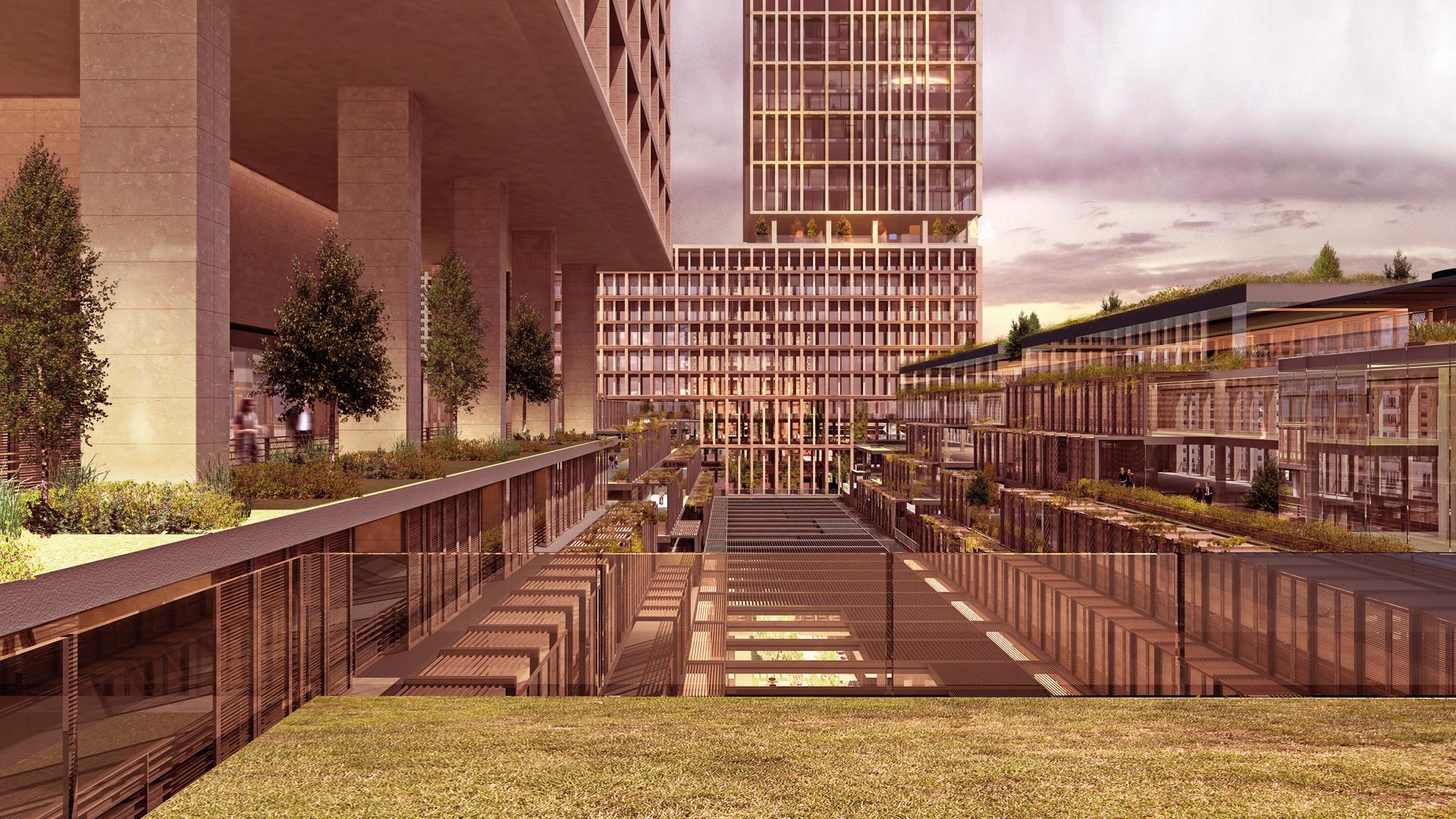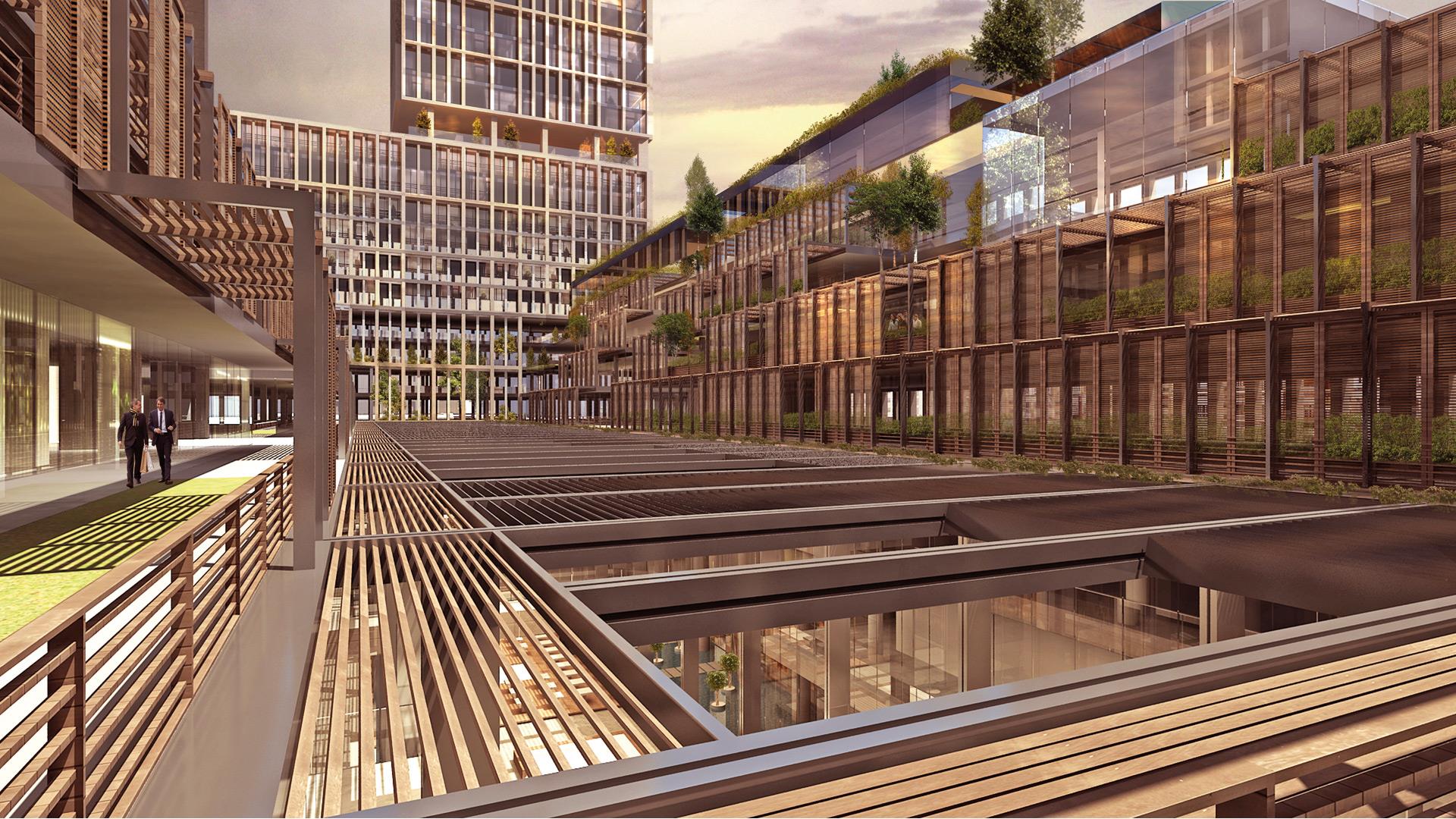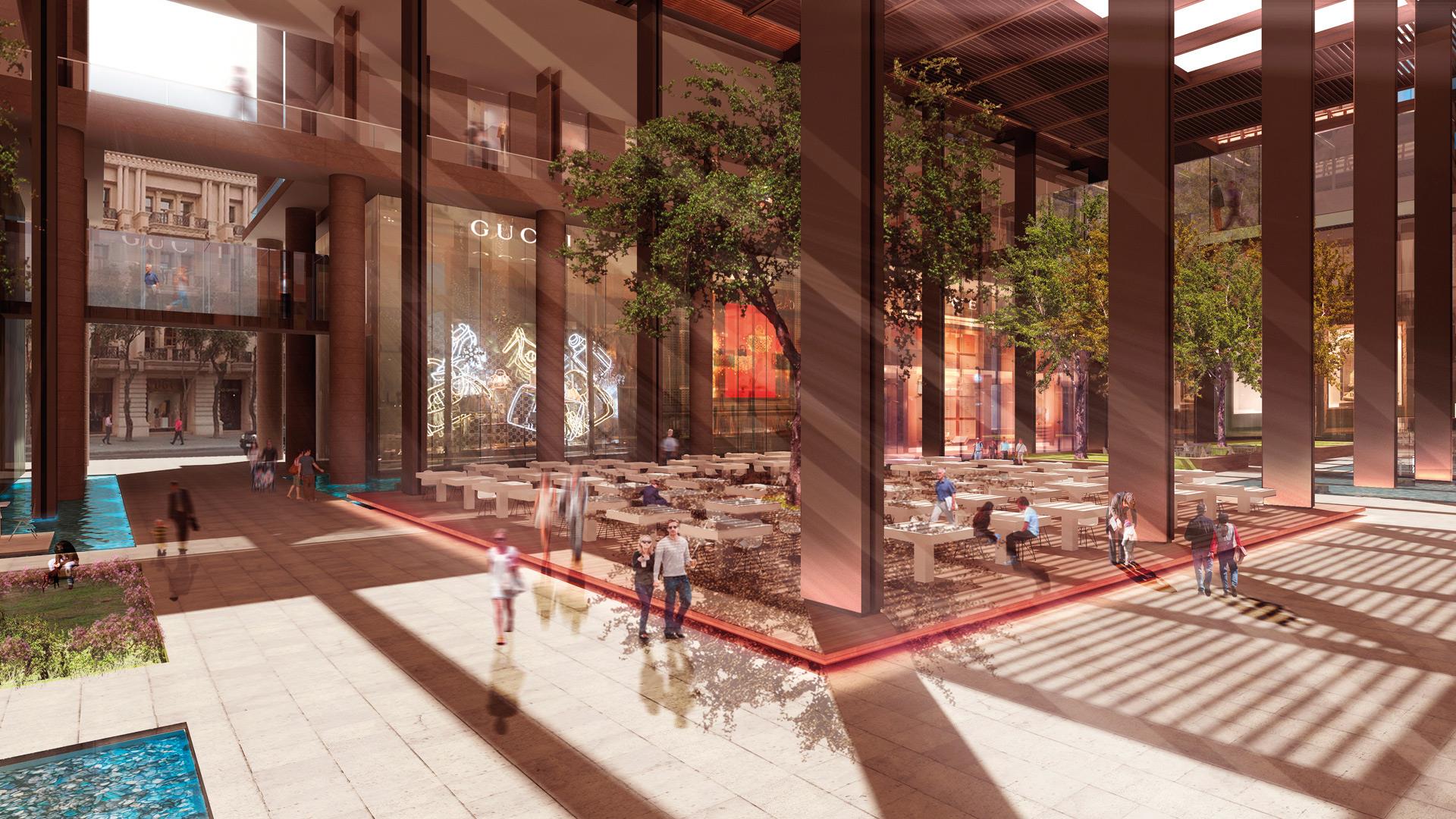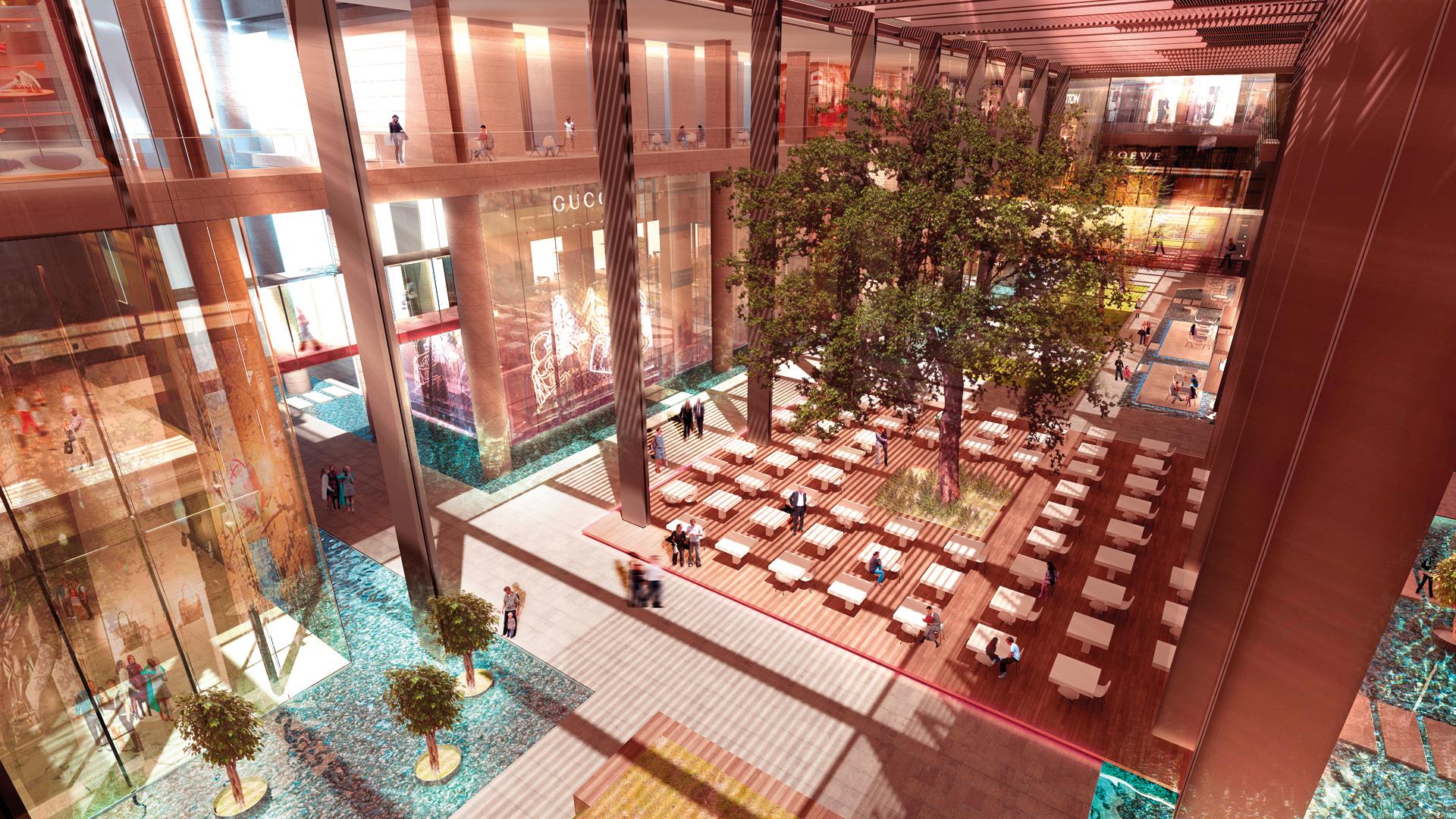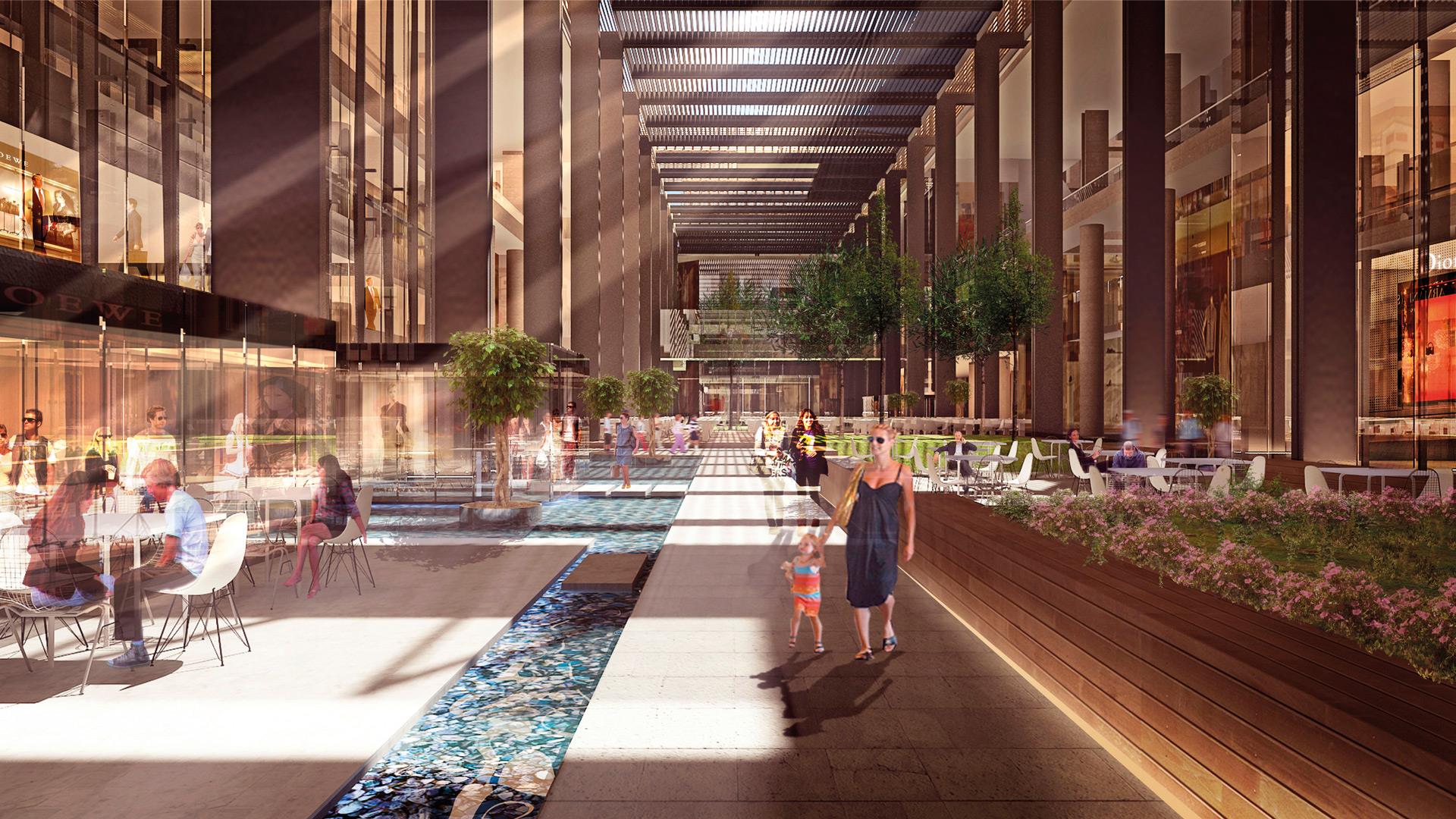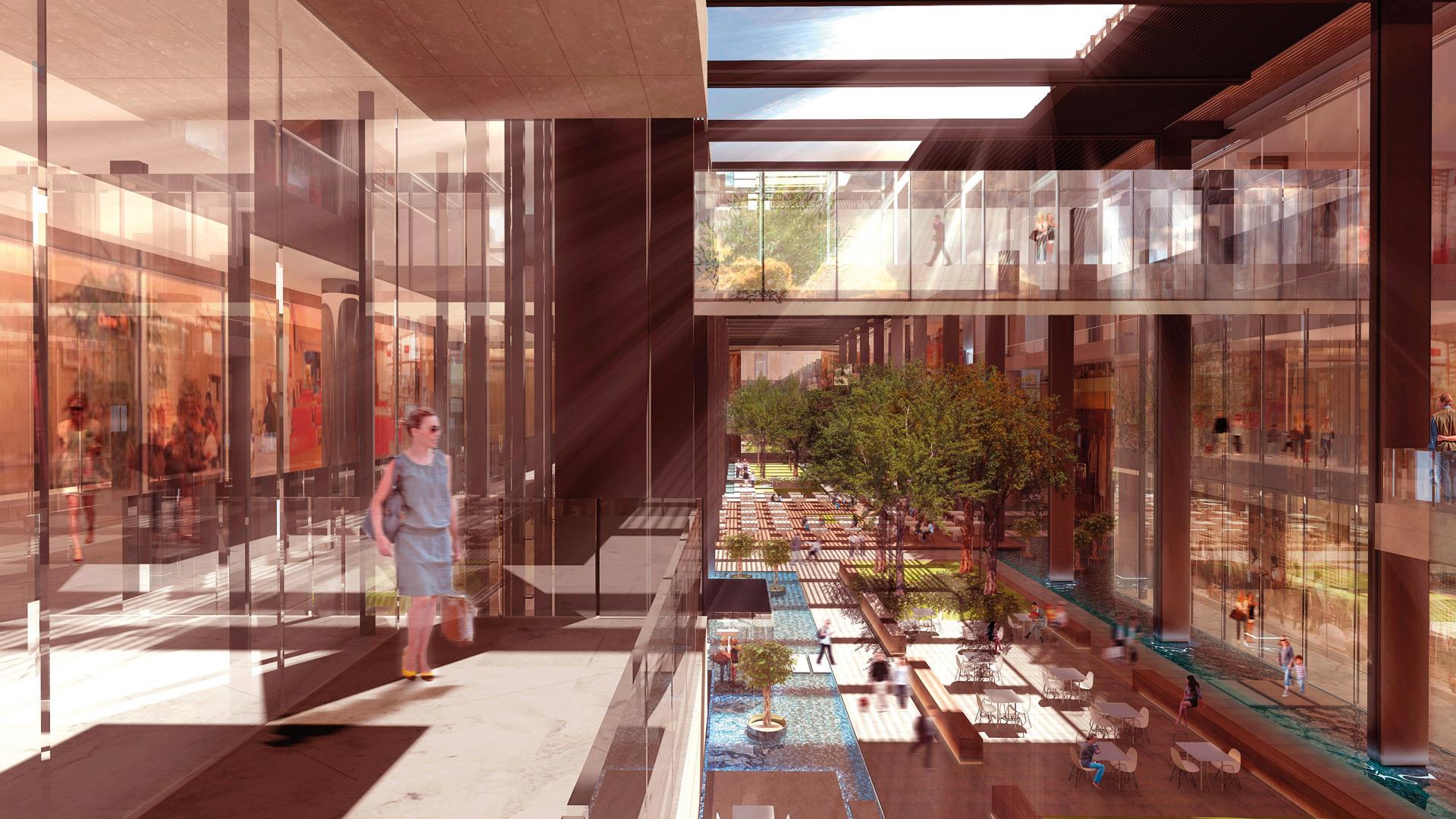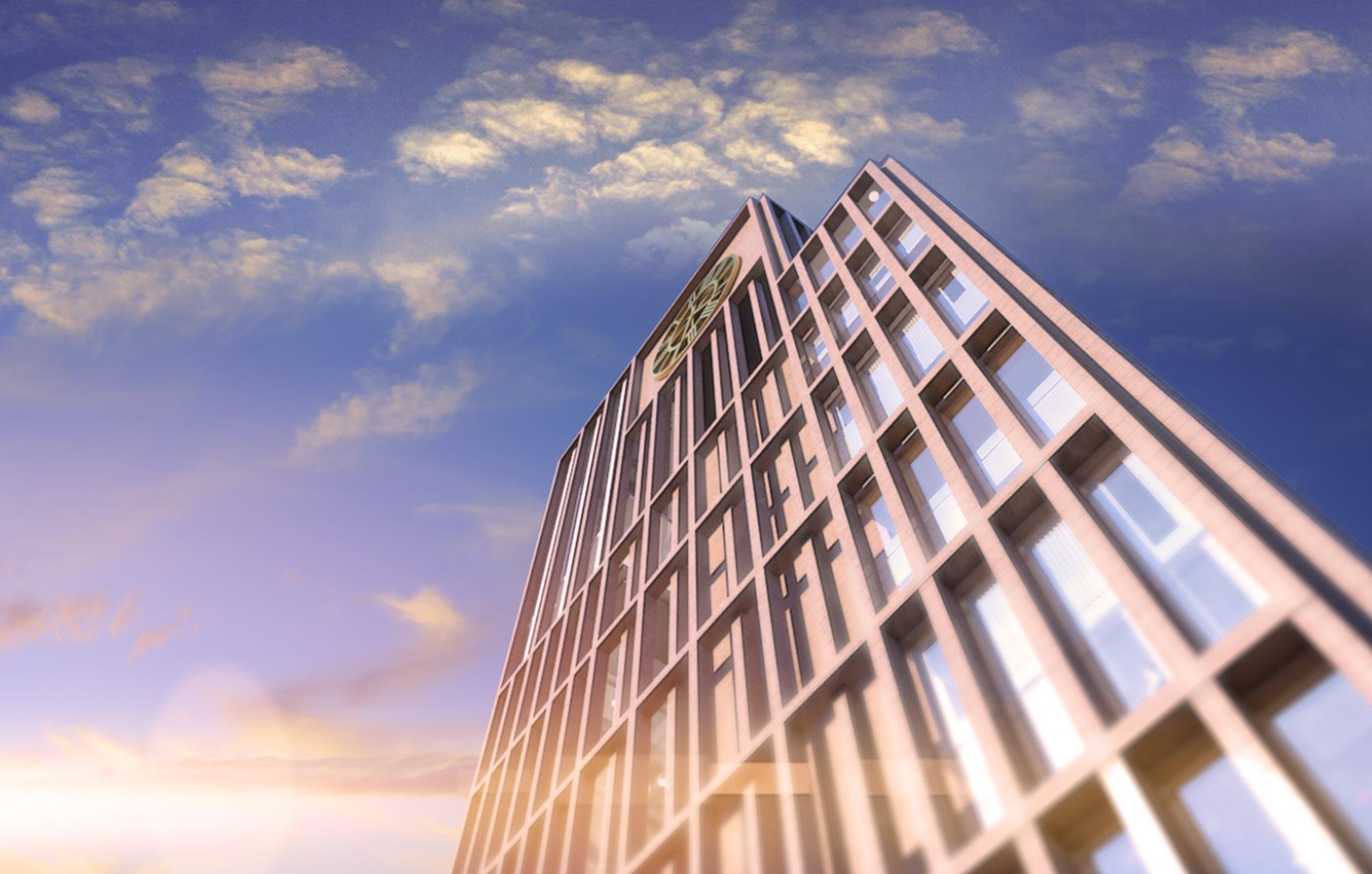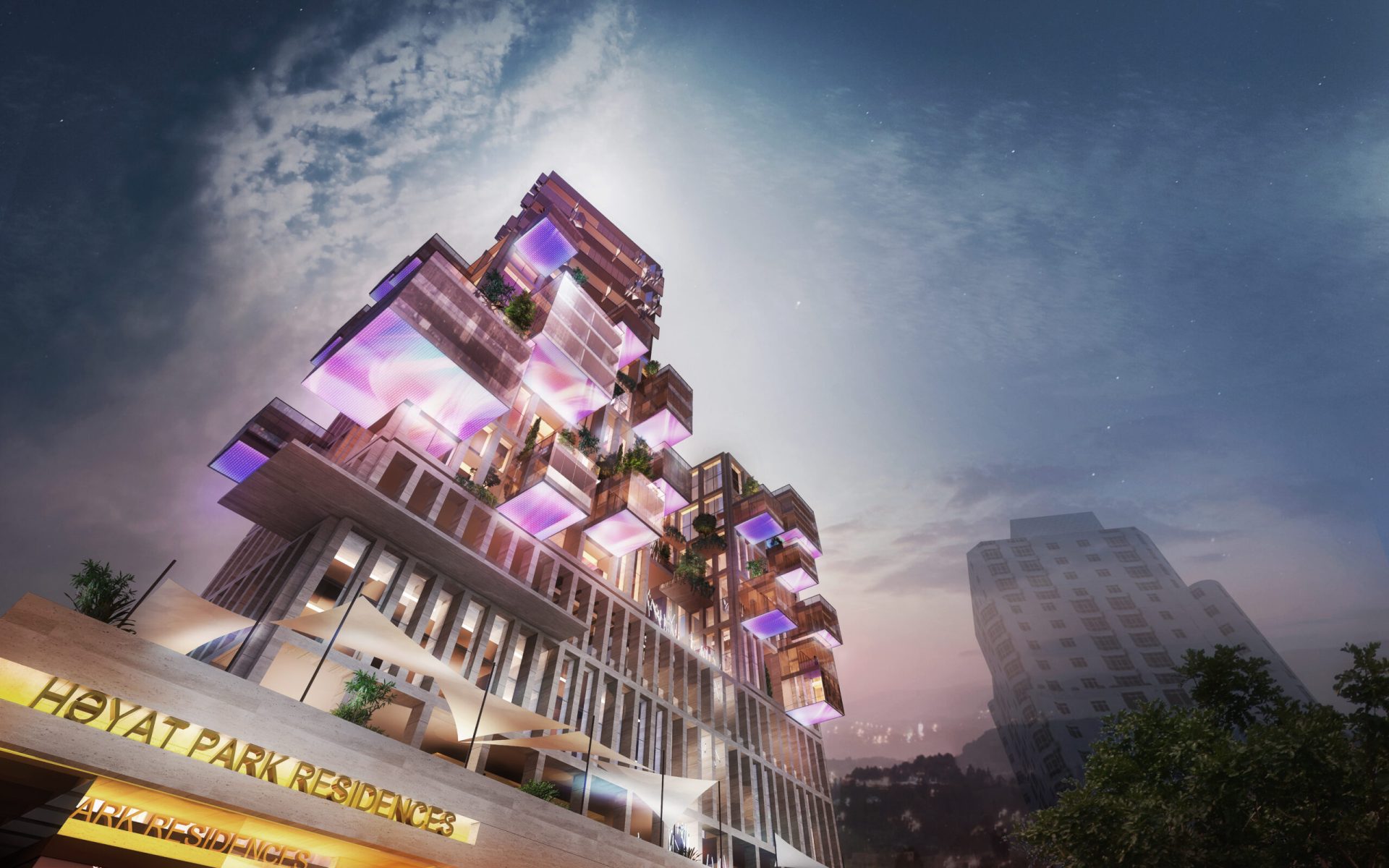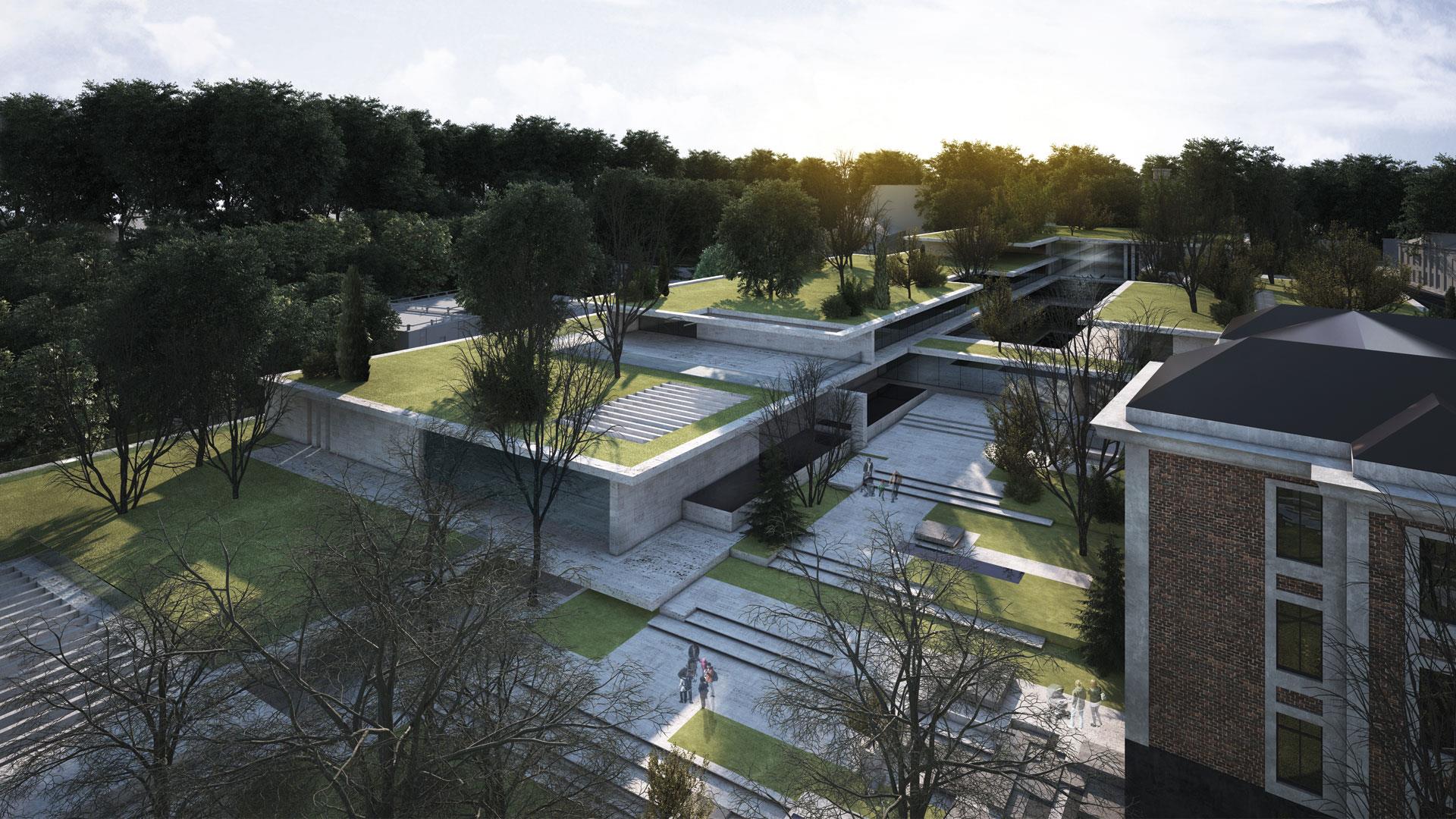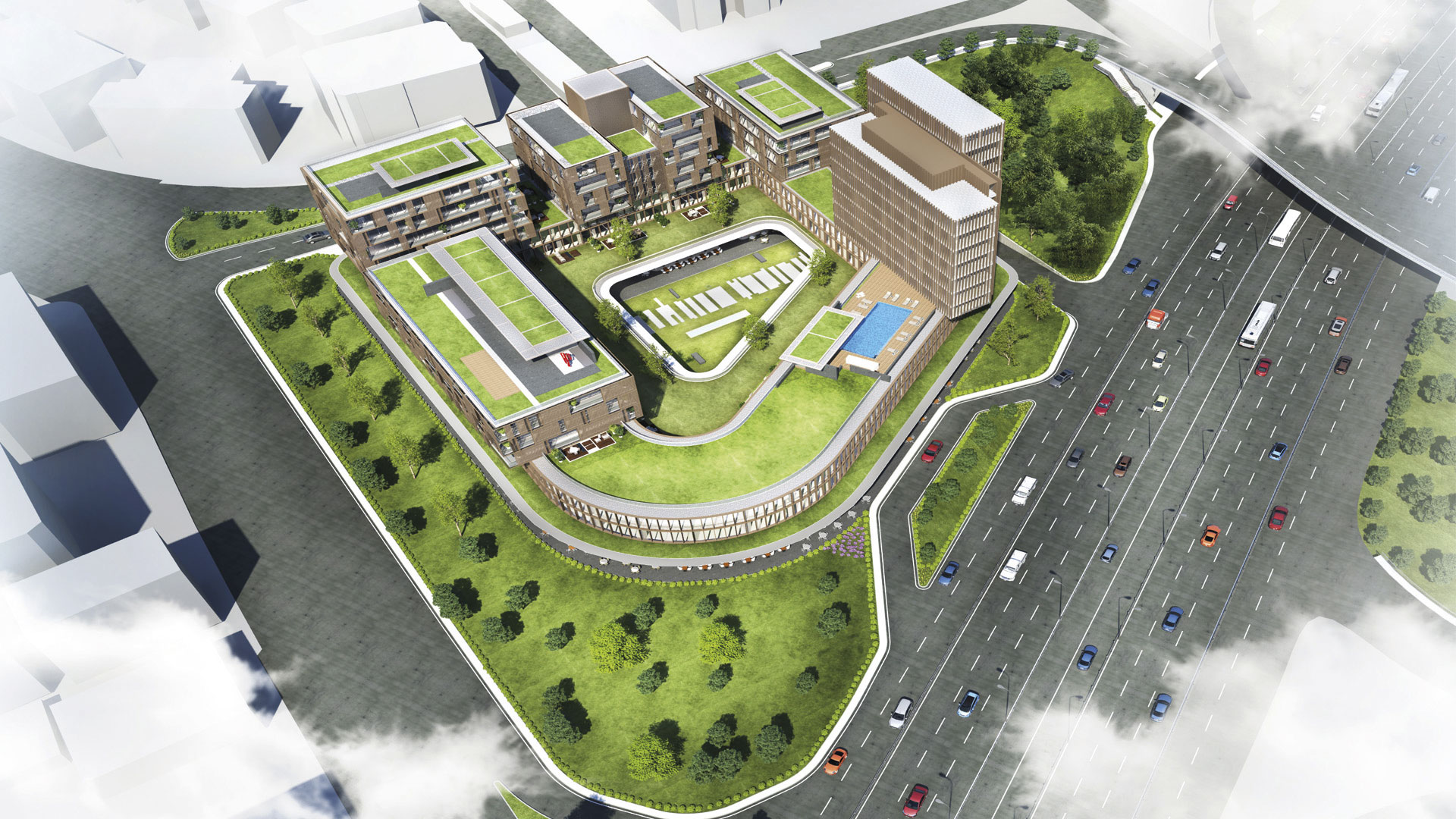The old inner city is the core of Baku with a written history of 2000 years. This core has been expanded along the seashore and towards the midlands after the economic boom triggered with petrol export since the 19. century. In time, Baku has turned into a modern city, with a rapid development in the context of a globalizing world.
Project site is located in the center of the city surrounded by important areas. The site is located in a neighbourhood consisting of important governmental and commercial buildings as well as main transportation facilities. On the line of the site, parallel to the seashore, the buildings vary in height. On the line perpendicular to the sea, the height varies less when compared to the general character of the area. The urban texture is seen in its densest form in a gabarite of 40 meters. The view towards the sea is mostly possible after this height.
The program of the building is shaped according to the gabarite of 40 meters and the sea view. Commercial facilities are located on ground level while residential facilities are located above the 40 meters limit.
The structural pattern of the area is formed as a grid, consisting of the roads intersecting each other, green areas as emptied urban blocks and inner courtyards. These courtyards have become backyards which are used as car parks. The connections in the urban texture are provided by vehicle roads and narrow pavements along the roads. The basement floors are impenetratable for pedestarians. They act like urban walls along the roads most of the time. Occasionally, commercial facilities located inside the blocks create individual alcoves along the pavements.
In the proposal, the podium created on ground level is made permeable in order to activate the courtyards with public facilities as well as enhancing the pedestrian circulation with alternative routes. In opposition to the existing urban texture which does not encourage the pedestrian to reach green areas, the alternative routes can create a new kind of connectivity and publicity between backyards and green areas through all neighbourhoods. Commercial floors on ground levels are made accessible by courtyards which are permeable through many entrances. Homeoffices are located above the commercial levels, up to the 40-meter-limit, where sea view is not possible. The backward terracing allows sunlight into the courtyards.
Architecture has deep effects on the urban memory of the city. The facades play an important role in this memory. Many new buildings in Baku today ignore the existing urban memory. The buildings are designed as spectacular objects, which can easily be seen in any city in the world. On the other hand, in the name of contextualism, another kind of architecture which is a fake reproduction of historical architecture is being produced. This is like trying to mimic the great writers such as Shakespeare, Dostoyevsky and Balzac today whose achievements are hidden in their sensibility about their era. This approach leads one into the trap of mere imitation. However, instead of reproducing an old entity with new techniques, a new interpretation preserving the distinctive features of the entity is possible. In the proposal, moldings, rhythm of the facades, corners, backyard passages are considered as distinctive features of Baku. Through synthesis of these features, a new interpretation that sustains the urban memory and meets the needs of this time, is born.



